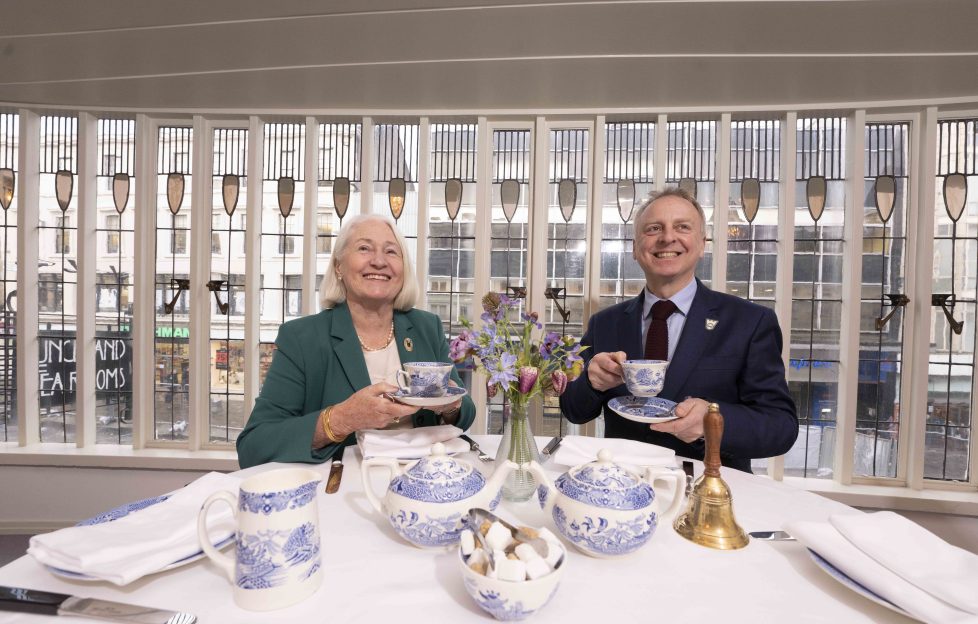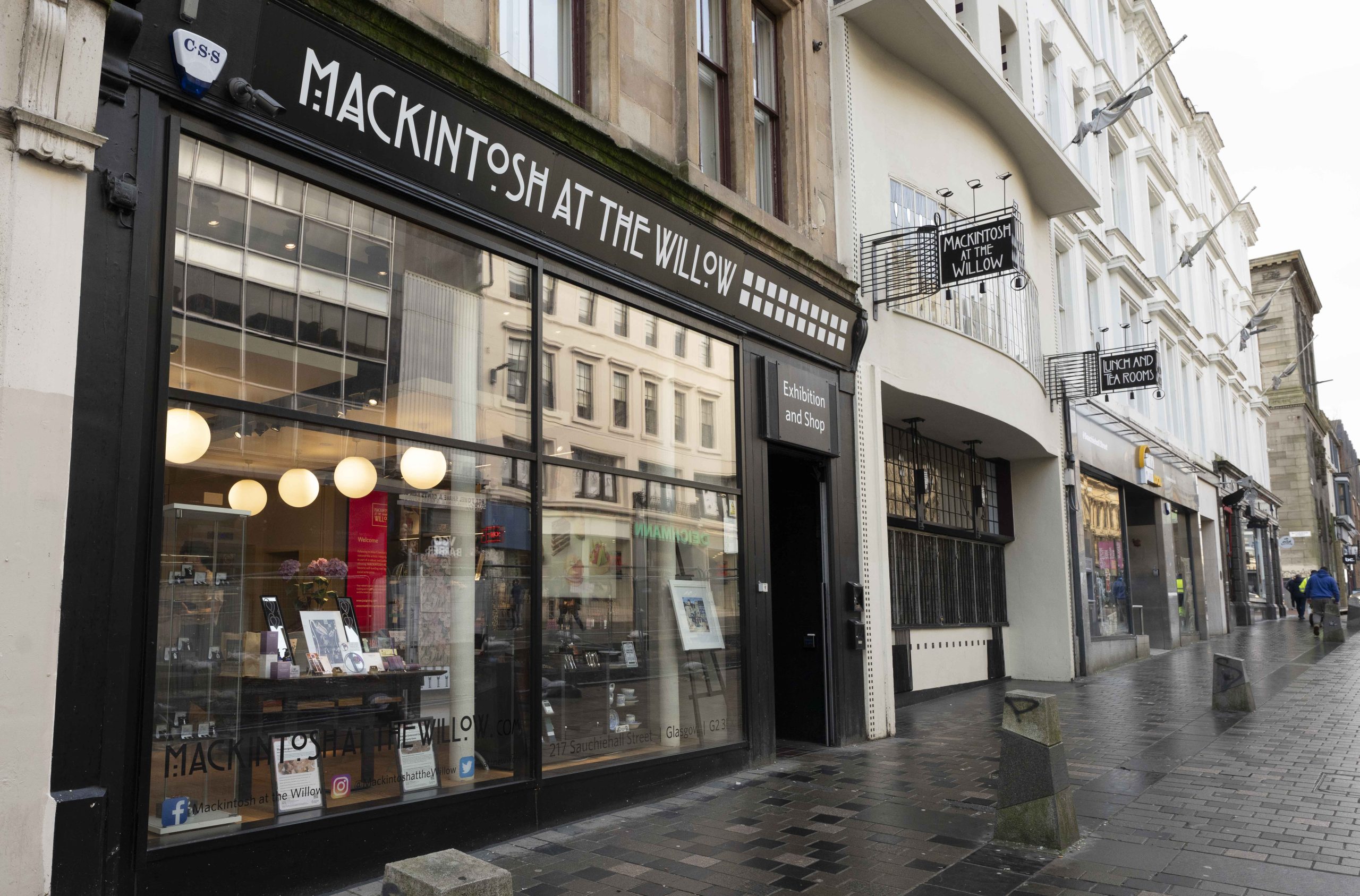
Mackintosh tea room rescued by National Trust for Scotland
The last surviving tea room designed by Charles Rennie Mackintosh has been rescued by the National Trust for Scotland.
Designed by the renowned architect in 1903, Mackintosh at the Willow in Glasgow’s Sauchiehall Street is considered one of the city’s most important contributions towards modernism.
The tea room was reopened five years ago after a £10m restoration, but it’s future has come under threat with the pandemic and struggles of the high street.
Heritage body the National Trust has now bought the tearoom for £1.75 million and said it will continue trading. The charity adds its to its portfolio of properties which include Mackintosh’s Hill House in Helensburgh.
Last year the tea rooms attracted more than 230,000 visitors and NTS said the business model was ‘fundamentally sound and successful’. Charity bosses said they were hopeful they would eventually get a return on their investment.
Mackintosh at the Willow was purchased, saved and restored by Glasgow businesswoman Celia Sinclair Thornqvist and The Willow Tea Rooms Trust between 2014 and 2018.

Ladies’ Room, Dekorative Kunst, 8, 1905. Credit: The Hunterian, Uni of Glasgow 2014
‘From the beginning, it was our aim to restore and conserve this last remaining and most beautiful example of Mackintosh’s masterful designs for tea rooms to the highest possible standards,’ said Celia.
‘Through this new partnership, I am delighted and relieved that a way has been found to sustain this global icon in Glasgow and Scotland, so that it can continue to be protected and shared.’
Ian Dickson, chairman of The Willow Tea Rooms Trust, said: ‘While Mackintosh at the Willow’s business plan has been working well, particularly over the last year, the years before, from the point when we opened in 2018, were exceedingly difficult.
‘Together, the cumulative effects of the second catastrophic Glasgow School of Art Fire and the street closures it caused and the serious troubles that quickly followed as a result of the COVID pandemic had very significant adverse impacts on us financially and, made it increasingly difficult for us to continue to operate.
‘I am truly delighted, therefore, that The Willow Tea Rooms Trust and the National Trust for Scotland have, after many months of discussion and negotiation, reached this agreement under which we are entrusting Mackintosh at the Willow to the care of the NTS.’
Phil Long, The National Trust for Scotland’s chief executive, said: ‘Mackintosh is one of the greatest architects of the 20th-century, respected internationally for his breathtaking and innovative design.

Credit: Gibson Digital / National Trust for Scotland 2023.
‘People from around the world travel to Scotland to see his and his wife Margaret Macdonald’s brilliant work together.
‘As the custodians of one of Mackintosh’s other rare masterpieces, the Hill House (on which Macdonald also collaborated), we see the acquisition of Mackintosh at the Willow as a perfect fit.
‘The brilliant restoration by The Willow Tea Rooms Trust with the support of The National Lottery Heritage Fund and many others gifted back to the nation an exceptional example of architectural heritage that we are proud to bring into our care.
‘Despite difficulties that were outwith the control of The Willow Tea Rooms Trustees and the management team, the work they have done with their staff in welcoming visitors, running community learning and outreach and in providing an exceptional heritage experience is exemplary – and we are certain we can build on their achievements to ensure the long-term sustainability and survival of this wonderful place on behalf of Glasgow and Scotland.
‘The prospects for Mackintosh at the Willow, and for the City of Glasgow, are genuinely exciting: through the work of Glasgow City Council and the Lottery-funded Heritage Places scheme, redevelopment is underway, with ambitions to return Sauchiehall Street to a cultural corridor better linking together such surrounding world-class institutions and venues as The Royal Conservatoire of Scotland, the Glasgow Royal Concert Hall, and the Theatre Royal.
‘We are looking forward to the National Trust for Scotland playing a part in this transformation through our new responsibility for Mackintosh at the Willow.’
TAGS

